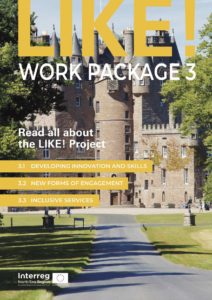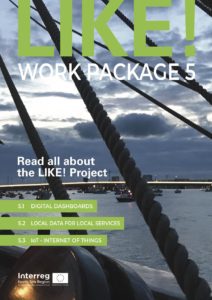Background
Like! is a €4.2M international collaboration Interreg project that I set up for Gemeente Groningen in 2016.
We set up Like! because we recognised that while most cities want to be innovative, the reality is that most cities have a limited ability to explore different ways of working, to innovate, and to develop newer and more appropriate services. Like! focuses on identifying ways to support local innovation and developing local innovation cultures.
In Like! cities, local governments, citizens, universities and SMEs came together to co-create smarter, more efficient and more innovative services through 9 transnational pilots that covered 3 core themes.
Key themes in Like!
1. Building Local Digital Innovation Cultures
Like! will create a Local Digital Innovation Culture across the North Sea Region, giving cities & regions & practitioners new skills and knowledge to deliver innovative services, to develop new ways of engaging with communities, and to build more local and more inclusive services.
2. Smart Services
These digital innovation skills will be used by local and transnational innovation teams to deliver new and innovative Smart Services in the NSR that use information more efficiently, that communicate with citizens and SMEs using appropriate channels and content, and which help governments move from delivering generic pan-city/pan-region one-size fits all services to truly local services that respond to local circumstances and which meet real local community needs.
3. Understanding the Digital DNA for the City/Neighbourhood
These Smart Services will then underpin activities to create a Digital DNA for the City/Neighbourhood, where digital dashboards will be developed by authorities to turn data into information that will be used by citizens, policymakers, SME’s and researchers to understand how cities and neighbourhoods are working. This will be complemented by work on integrating information from IoT sensors and build upon work to enable the use of local data and information for local services.



